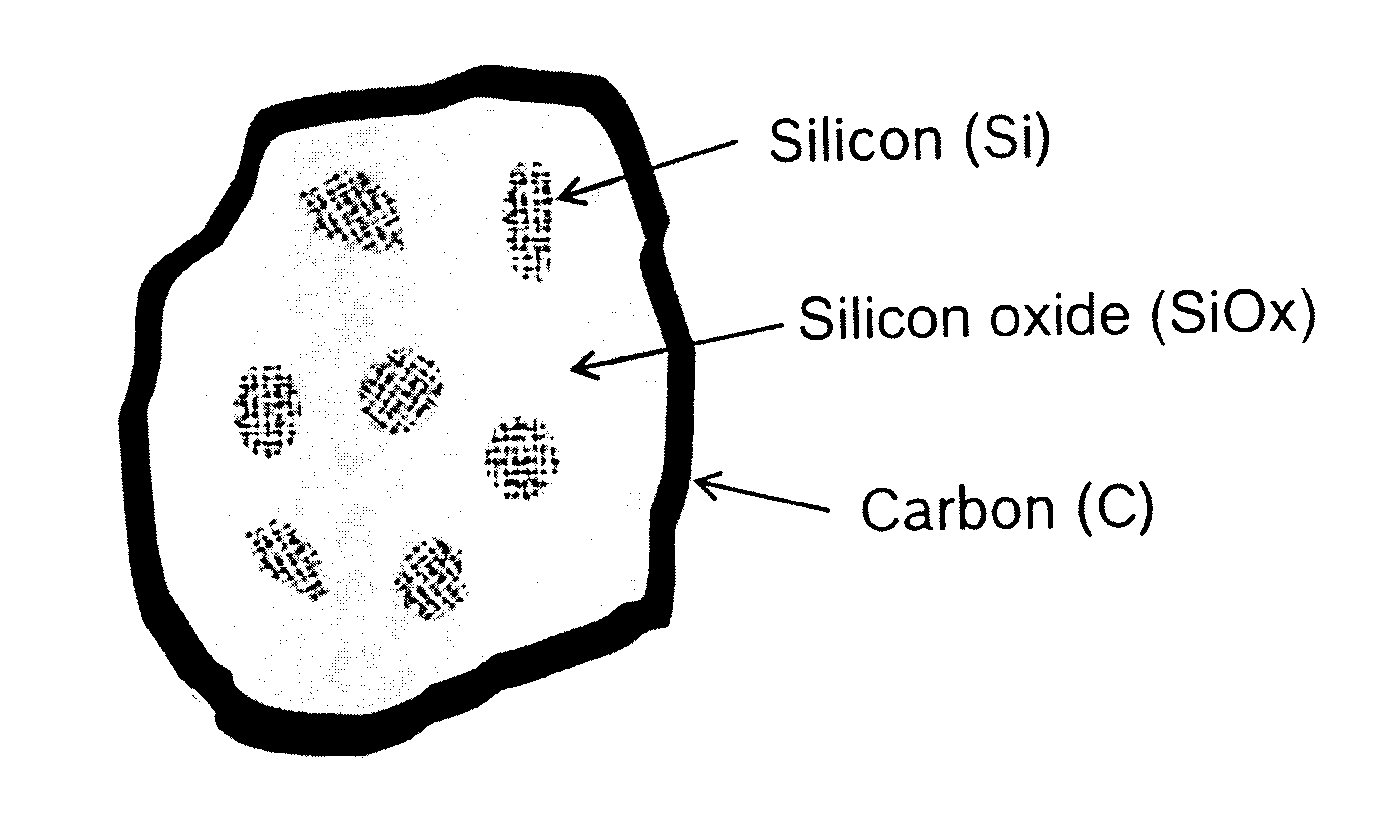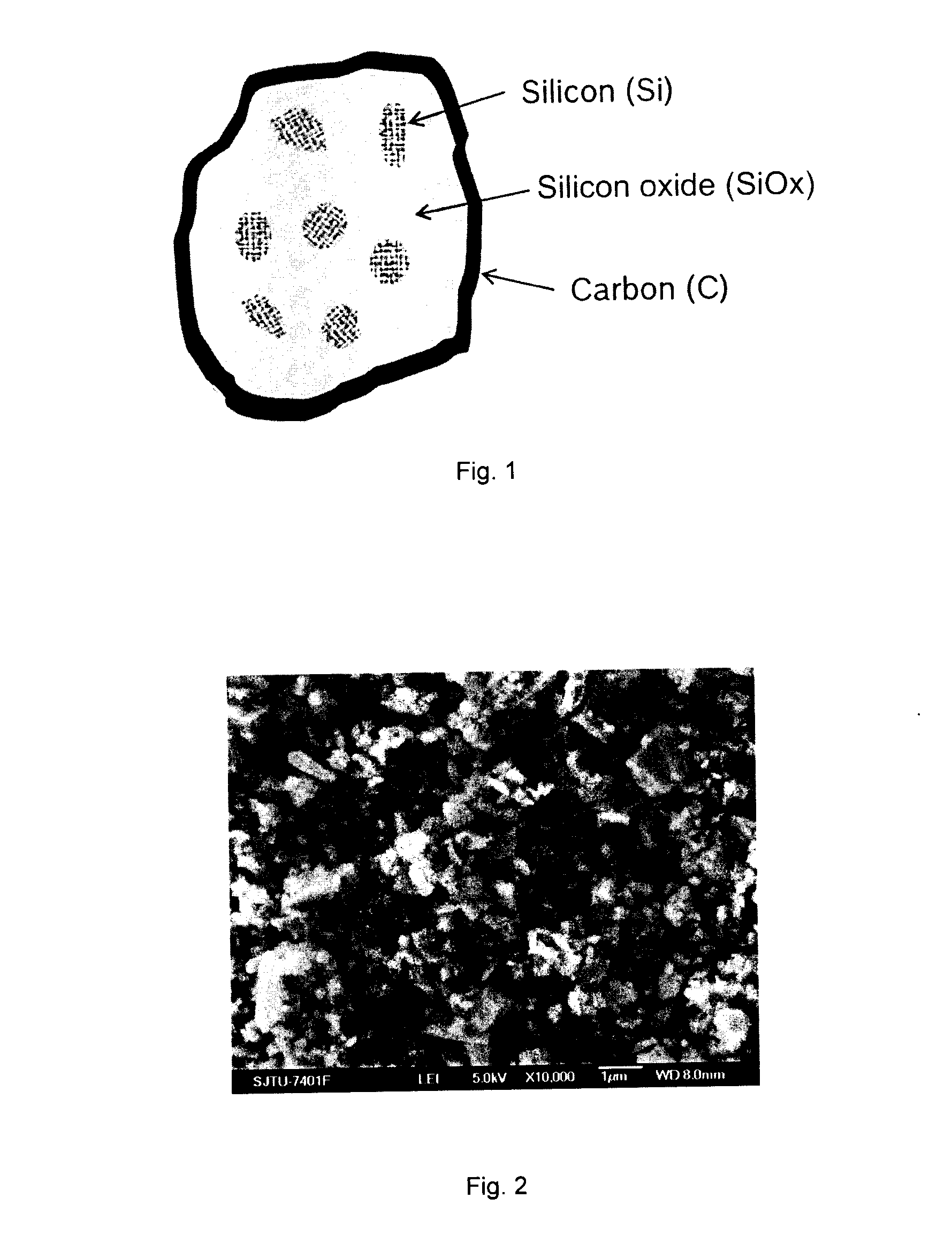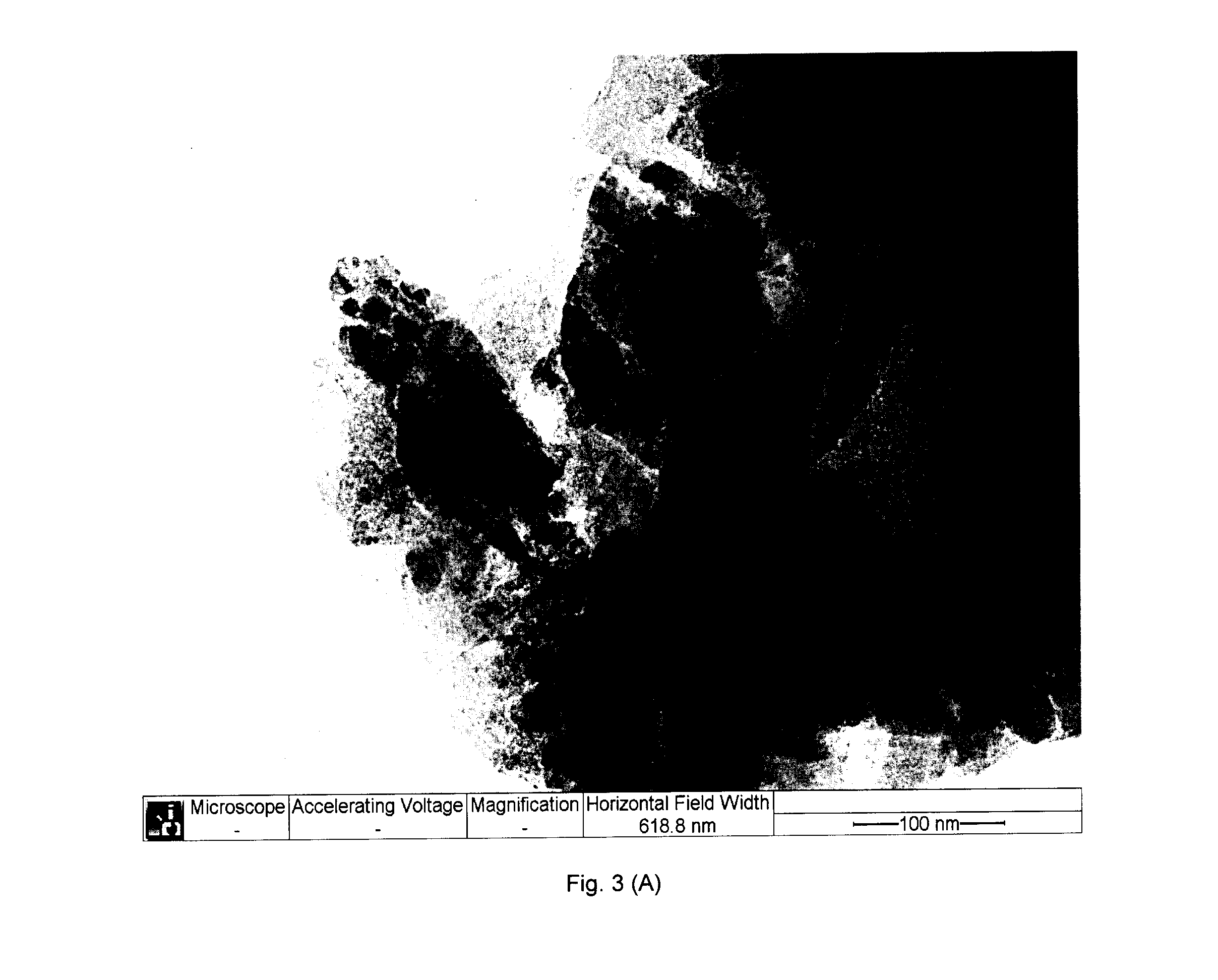SiOx/Si/C Composite Material and Process of Producing thereof, and Anode for Lithium Ion Battery Comprising Said Composite Material
a composite material and lithium ion battery technology, applied in the direction of batteries, cell components, electrochemical generators, etc., can solve the problems of atomic structure of solid sio still controversial, loss of electronic conductivity of electrodes, and relative low energy density of graphite, and achieve high reversible capacity and reduce oxygen conten
- Summary
- Abstract
- Description
- Claims
- Application Information
AI Technical Summary
Benefits of technology
Problems solved by technology
Method used
Image
Examples
example
Example 1
[0073]The Production of SiOx / Si Composite Material
[0074]The SiOx / Si composite material was synthesized by high energy ball-milling process with a Planetary Mono Mill P-6 (Fritsch, Germany) at a rotation speed of 400 rpm for 25 h. 2.0 g of SiO (325 mesh, Aldrich) powder was placed in a 80 ml zirconica vial and ball milled with 10 zirconia balls (φ=10mm) for 10 h. Then 0.218 g of Mg powder (200 mesh, from Sinopharm Chemical Reagent Co., Ltd), was added and it was further ball milled for 15 h. As a result, the SiOx / Si / C composite material having a D50 particle size of about 1.0 μm, a D90 particle size of about 11.0 μm, and a D10 particle size of about 0.4 μm was obtained (as shown in FIG. 4). The obtained powder (SiOx / Si / MgO) was first immersed by 2 M HCl solution for 12 h to remove MgO, followed by washing with deionized water and finally vacuum dried at 60° C. for 10 h. As a result, the obtained SiOx / Si composite material has a Si:O molar ratio of about 1.25:1.
[0075]The Pro...
example 2
[0077]The SiOx / Si / C composite material was produced as in the same method used in Example 1, except that 2.0 g of SiO powder and 0.545 g of Mg powder were loaded in the ball-milling process. As a result, the obtained SiOx / Si composite material has a Si:O molar ratio of about 2:1.
example 3
[0078]The SiOx / Si / C composite material was produced as in the same method used in Example 1, except that 2.0 g of SiO powder and 0.872 g of Mg powder were loaded in the ball-milling process. As a result, the obtained SiOx / Si composite material has a Si:O molar ratio of about 5:1.
PUM
| Property | Measurement | Unit |
|---|---|---|
| particle size | aaaaa | aaaaa |
| thickness | aaaaa | aaaaa |
| D50 particle size | aaaaa | aaaaa |
Abstract
Description
Claims
Application Information
 Login to View More
Login to View More - R&D
- Intellectual Property
- Life Sciences
- Materials
- Tech Scout
- Unparalleled Data Quality
- Higher Quality Content
- 60% Fewer Hallucinations
Browse by: Latest US Patents, China's latest patents, Technical Efficacy Thesaurus, Application Domain, Technology Topic, Popular Technical Reports.
© 2025 PatSnap. All rights reserved.Legal|Privacy policy|Modern Slavery Act Transparency Statement|Sitemap|About US| Contact US: help@patsnap.com



